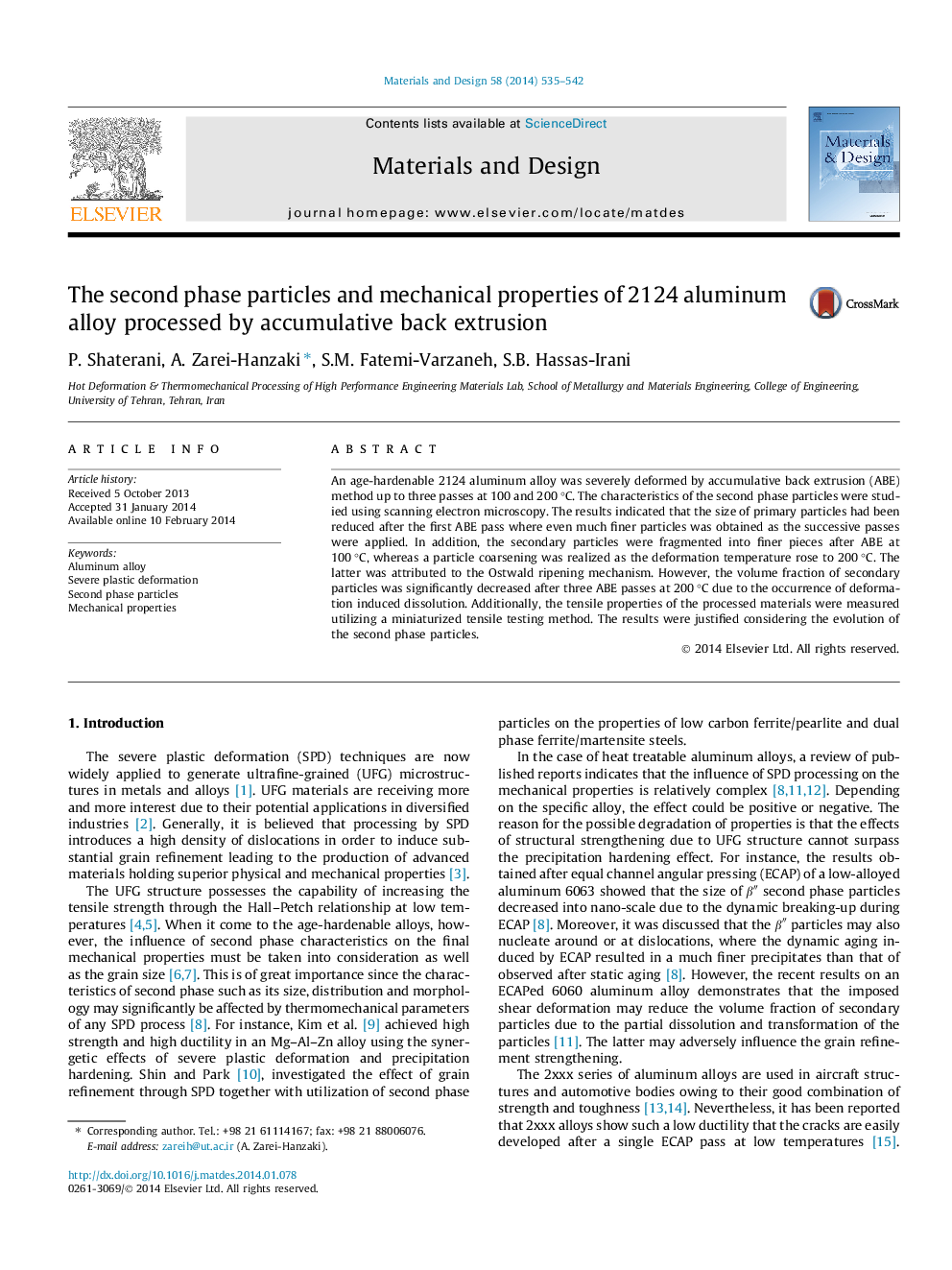| Article ID | Journal | Published Year | Pages | File Type |
|---|---|---|---|---|
| 829308 | Materials & Design (1980-2015) | 2014 | 8 Pages |
•ABE resulted in a structure with round and fine primary particles.•Successive ABE passes at 100 °C resulted in a reduction of the average size of secondary particles.•Three ABE passes at 200 °C resulted in the dissolution of secondary particles.•Tensile properties of ABEed specimens were studied.
An age-hardenable 2124 aluminum alloy was severely deformed by accumulative back extrusion (ABE) method up to three passes at 100 and 200 °C. The characteristics of the second phase particles were studied using scanning electron microscopy. The results indicated that the size of primary particles had been reduced after the first ABE pass where even much finer particles was obtained as the successive passes were applied. In addition, the secondary particles were fragmented into finer pieces after ABE at 100 °C, whereas a particle coarsening was realized as the deformation temperature rose to 200 °C. The latter was attributed to the Ostwald ripening mechanism. However, the volume fraction of secondary particles was significantly decreased after three ABE passes at 200 °C due to the occurrence of deformation induced dissolution. Additionally, the tensile properties of the processed materials were measured utilizing a miniaturized tensile testing method. The results were justified considering the evolution of the second phase particles.
